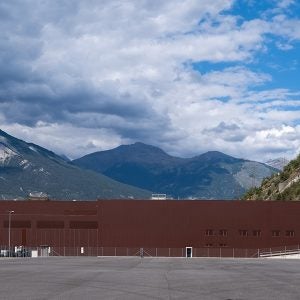A design flaw in the tailings dam at Imperial Metals Mount Polley gold-copper mine in British Columbia, Canada, was the cause of a breach last summer, an independent investigation has found.
The dam breached on August 4, discharging water and tailings into Polley Lake, Hazeltine Creek and Quesnel Lake. There was no loss of life or injury reported, and Imperial Metals said the tailings discharged are alkaline with an average ph of 8.5 and were not acid generating.
An expert panel appointed to investigate the breach found that the Perimeter Embankment of the dam failed because a glacio-lacustrine layer (GLU) lying approximately 8m below the base of the dam in the area of the breach was not as strong as had been assumed in the design of the dam. Had the GLU beneath the TSF been as strong as assumed by design criteria, this sudden and unanticipated failure would not have occurred, the panel said.
"The Panel concluded that the dominant contribution to the failure resides in the design," the report states. "The design did not take into account the complexity of the sub-glacial and pre-glacial geological environment associated with the perimeter embankment foundation. As a result, foundation investigations and associated site characterization failed to identify a continuous GLU layer in the vicinity of the breach and to recognize that it was susceptible to undrained failure when subject to the stresses associated with the embankment."
The report also indicated that the failure was triggered by construction of the downstream rockfill zone at a steep slope. The Panel concluded that had the downstream slope been flattened failure would have been avoided. The slope was in the process of being flattened to meet its ultimate design criteria at the time of the accident.
Despite the design flaw, the report says that construction over the 18 year life of the tailings storage facility was at all times carried out in accordance with design criteria provided by the Engineers of Record and approved by the Ministry of Energy and Mines (MEM).
Design criteria accepted for the TSF required a factor of safety of 1.3 during the operating life of the mine, increasing to 1.5 at closure. Based on the calculations presented in the design reports, the factor of safety of the Perimeter Embankment where the failure occurred exceeded 1.5 at the time of failure.
The Panel also examined the historical risk profile of other tailings dams in B.C. and concluded that to avoid risk in the future requires the adoption of Best Applicable Practices (BAP) and the migration to Best Available Technology (BAT). Examples of Best Available Practices call for improvements of corporate design responsibilities, and adoption of independent tailings dam review boards. Examples of Best Available Technology include filtered, unsaturated, compacted tailings and a reduction in the use of water covers in a closure setting.
The panel published seven recommendations to reduce the potential of future failures
- To implement best available technology (BAT) using a phased approach: for existing tailings impoundments – rely on best practices for the remaining active life; for new tailings facilities – BAT should be actively encouraged for new tailings facilities at existing and proposed mines; for closure – BAT principles should be applied to closure of active impoundments so that they are progressively removed from the inventory by attrition.
- To improve corporate governance.
- To expand corporate design commitments.
- To enhance validation of safety and regulation of all phases of a tailings storage facility.
- To strengthen current regulatory operations.
- To improve professional practice.
- To improve dam safety guidelines.
A full copy of the report can be found at www.mountpolleyreviewpanel.ca.






